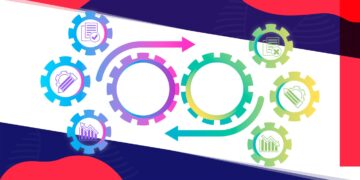Leadership has evolved quite a lot through time, given people themselves have evolved. It’s not just numbers; it’s not just a job anymore – there’s a shift of attention to the people: what affects them, what drives them…?
So, we see different types of Leadership arising. Organizations and leaders have, of course, to adapt to the new challenges and demands of their people. Here’s our table of contents for today:
- What is leadership?
- Leadership in Stellaxius
- How to develop a servant/positive/coach leader in us?
- Leading remote teams
1. What is leadership?
First things first – let’s establish some common ground around the concept.
From all types of Leadership out there, there are a few that have nowadays some consensus as being more effective and impactful, not only overall but in Stellaxius as well.
- Servant Leader – the priority is to serve, to altruistically care and provide for others’ needs, to help others grow and perform better, toward self-awareness and self-improvement, while becoming wiser and more autonomous. The leader listens, engages and involves others, sharing the power and control with them.
- Positive Leader – the goal is to be a better person and help others become their best selves, by maximizing their strengths and inspiring them to seek excellence, in a safe and collaborative environment. More than satisfaction, the leader aims for people’s happiness, which then creates conditions for self-motivation and high performance.
- Coaching Leader – the focus is to nurture the individuals’ qualities, giving them strategies and tools so they can autonomously develop, improve and succeed to the best of their abilities. Each individual with their own unique needs and strengths, can explore and tailor their skills and tasks while still collaborating together with the team.
They are not that different as you can see, and you could be a mix of them – that’s why we like them all. They focus on each individual and their needs, giving them the conditions and autonomy to learn and grow, ultimately for their well-being and happiness (while getting results of course).
In all 3, the leader wants to develop other leaders in their people – because we all benefit from that.
The importance of flowing
Another very important thing to know, is that we are not, nor we should be, always the same type of leader. Depending on what each situation or person requires, we might need to flow between different styles of leadership.
If there’s an urgent deadline, and the team really needs your guidance on what to do, then you might have to be a more Directive Leader. When you’re trying to decide what team building activity to do, you might choose to be a Democratic Leader, to get to a majority consensus.
Remember, flow as the situation demands!
Leader vs Manager
I’m sure you also have heard of how a Manager is different from a Leader. A person can be a leader, and not be a manager. And a manager might not be a leader, although we can agree, all managers should (ideally) be leaders.
Some differences:
- Leadership is about principles, while Management is about rules and procedures.
- Leaders point in the right direction and guide the team toward the goal. Managers plan and organize until we’ve reached our goal.
- Leaders inspire, trust, motivate (influence). Managers control, rule and coordinate activities (power).
It’s the ability to influence and inspire that makes the leader, not power and control. And leadership should come first, then management. First, you need a vision, a direction. Then you can define the skills, tools and activities you need to get from here to there. Otherwise, you might be planning for the wrong direction.
2. Leadership in Stellaxius
In Stellaxius, we don’t know it all, nor we do all we know. We are a group of human beings, that make mistakes and are continuously learning, like everyone else. But we do desire to have the best people and to provide the best to our people.
So, here’s what’s truly ours:
- Caring – this is in Stellaxius DNA, and in everyone of us, but this is first of all driven from our leaders – they personify exactly the company’s culture and values. Our leaders are caring, great human beings, genuinely worried about people – they are authentic! They are so busy, and yet, they find the time if you need it, and they are always there for you.
- Growth & excellence – we breathe learning, innovating, continuous improvement and live developing our skills. To enable that, we give and receive feedback, we accept that making mistakes is part of getting it right, we take some calculated risks, empowering people and hearing their suggestions and ideas – that’s how we get to excellence.
- Create & deliver value – we aim to provide maximum value to our customers and employees, and then ultimately, to Stellaxius.
We can see a lot of previous Leadership definitions in Stellaxius leaders; we live and breathe our values and we hope everyone in Stellaxius will growth with us and become great with us. But more than hoping, we work everyday and every year to make that happen, as best as we can.
3. How to develop a Servant/Positive/Coach Leader in us?
As I said before, we won’t always assume the same type of leadership for all situations and I’m not here to impose you a type of Leadership – we all have our style, our personality.
If you’re aiming to develop your leadership though, first you should find out what leader do you want to be, then define how to become that leader.
Applying a bit of coaching here, I leave you some tips and exercises you can do to discover more about your drivers and help you shape the leader you’d like to become.
1) What leader do you want to be?
- Think of a great leader you have/had in the past – how did he/she make you feel? Why do you have that person as a reference? How did he/she behave?
- Think of the legacy you want to leave behind – How do you want to be remembered? What impact do you want to make? How do you want to inspire others?
2) Know your strengths and drivers
- Find your drivers/forces of character – list what are the 6 most important values/characteristics to you, and order them by importance. If you want something more concrete and accurate, I can recommend two online tests:
- Find your strengths/passions – What are you good at? In which moments were you at your best? In which situations did you feel really happy and accomplished?
3) Define an action plan
- Performance improvement plan:
- What are the things I need/want to improve?
- Which outcomes/results do I expect with those improvements?
- What are the activities to execute or support you need to improve on those points?
- Job crafting
- What would your ideal work day look like?
- Which tasks would you change or add to include aspects/activities that you love to do (that would make you happier)?
- What is the positive impact of your work? (for you, your company, your clients…)
- How would you improve relationships at work?
4) Be authentic
It’s not just kids that can see right through you – your colleagues can too! If you force yourself to be someone you’re not, it won’t feel genuine, and then people won’t trust you – basic human instincts.
So, if you want to make this work, be yourself, be honest and transparent, show empathy and some vulnerability – that can only make you look stronger, and people will connect to it, because everyone has their struggles and vulnerabilities too.
Genuinely, do your best, show people you care and you make an effort for them, to altruistically help them, and you’ll have some of the best allies with you.
4. Leading remote teams
With Covid-19, lots of businesses were forced into remote work, and IT companies such as Stellaxius was one of them. Now, a new paradigm became more the rule than the exception: remote/hybrid work.
The big difference is pretty obvious – physical distance! But the truth is, for a lot of IT companies, we were already used to some remote work, because of international projects or mixed teams.
Agile methodologies which most of IT projects follow nowadays, also provide great tools and habits that help with remote work, keeping track of tasks and productivity, even before Covid.
So, what were the main differences and challenges we felt?
Key challenges of remote teams
- Communication – communication is now all done from the other side of the screen or phone. You don’t get the same level of non-verbal communication, and even if you get some, it’s only in that temporary timeframe which the meetings last. It feels slower and not as easy as if you were next to the person. Also, it feels more formal by default, to send a message on chat, or ask for a meeting to talk.
- Connection – because the communication is different, not in person and a bit more formal, making real connections might be harder too. And connections and relationships are key to build a trusting and collaborative environment.
- Sharing – brainstorming, discussing ideas across the table, sitting next to a colleague for 5 min and show “how to do it”, all need a meeting now – there’s no osmotic communication. The speed of knowledge transference and sharing of experiences is different and probably slower.
- Motivation/know people’s mindset – this one is key to Leaders! You don’t see people in the office, how they look, what’s their attitude, which makes it harder to identify trends of demotivation, dissatisfaction, unhappiness. And the lack of connection might make it harder to feel part of a whole, with a common purpose/goal.
- Setting boundaries – delimiting your working hours, space, and activities during working hours is hard when at home. Not all are great at it, and you need to be very methodic and disciplined to avoid mixing too much your personal and professional areas.
So of course, this has impacts in the way we work, and consequently, in Leadership itself.
Stellaxius’ teams and leaders had to adopt some measures to adjust to the new reality, and those have become the new habits and ways of working of hybrid/remote teams.
Best practices of remote work:
- Ensure the team meets regularly – as Agile already suggests, a daily meeting to check on tasks’ progress and what everyone is planning for the day is great to keep people going, productive and accountable for their work. In addition, a weekly checkpoint might be good to check overall project progress, and if there are any more generic issues, etc.
- Create moments for fun – these are key to build connection and a sense of belonging – prepare some games, curiosities about each one in the team, etc (there are many online games you can find). I’d suggest you do these weekly, but find what works best for you.
- Create different channels for communication and sharing – e.g. different groups for different sets of skills, so we don’t disturb others when there’s a topic only for some vs a team group to communicate and reach to all.
- Follow-up people’s mindset/well-being regularly – have catch-ups with your team members individually, ask how are they doing, how they feel, what are their struggles, how can you help.
In summary, it’s all about being there, even though you’re not really there (physically). You need to be available for your team, and create habits so they feel you really mean it and can trust you.
High performance teams
Finally, I’d like to leave you a note on high performance teams – what are their characteristics and behaviors? What drives them to success?
These people are typically self-aware, self-motivated, accountable, autonomous, resilient, optimistic, courageous, empathic, and respectful, between others.
They are great at communicating, collaborating, learning, adapting, recognizing, innovating and resolving conflicts.
So, how can we bring all of these together?
If we, as leaders, can work first to become someone with these characteristics ourselves, then inspire and work with others to help them develop and grow these same characteristics in them, applying the necessary tools and practices to overcome all the challenges and continue to improve, then I think we are on the good direction to our best selves. 😊
We hope you find this information useful for you to implement within your company. Also, the best of luck to you! And don’t forget to subscribe our Knowledge Center.
SUBSCRIBE KNOWLEDGE CENTER
Subscribe for free to our Knowledge Center to get the latest articles straight to your inbox!







